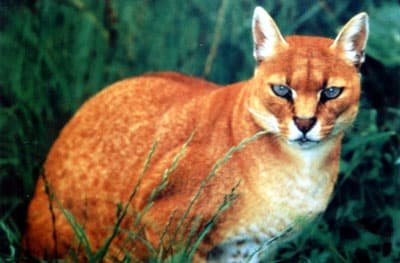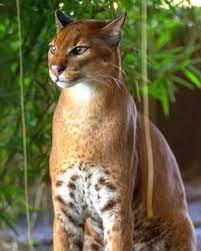
The African golden cat, Caracal aurata, is a medium-sized wild cat native to the rainforests and moist forests of West and Central Africa. Its name comes from its typically golden-red or reddish-brown coat, though it can also be silver-grey, sometimes with subtle spots or rosettes. This elusive feline is characterized by its robust build, relatively long legs, and a medium-length tail. Very little is known about the species in the wild due to its nocturnal and solitary nature, and the dense, often inaccessible, habitats it occupies. It is an agile climber but primarily hunts on the ground, preying on a diverse range of animals, including rodents, birds, monkeys, small antelopes, and even domestic poultry, showcasing its opportunistic hunting strategy.

The African golden cat plays an important, though poorly understood, ecological role as a mesopredator within the complex and biodiverse African rainforests. By preying on various small to medium-sized animals, it contributes to regulating their populations, which in turn influences the health and balance of the forest’s intricate food web. As a species highly reliant on intact forest ecosystems, its presence is a strong indicator of a healthy and biodiverse environment. These rainforests are crucial for global biodiversity and climate regulation, yet they face severe threats from deforestation, logging, and the bushmeat trade. Therefore, protecting the African golden cat is vital not only for the survival of this mysterious and vulnerable feline but also for the preservation of the vast, irreplaceable, and ecologically significant rainforests of Central and West Africa.
Every day, wild cats around the world face threats like habitat loss, poaching, and natural climate progression. But hope isn’t lost. With your support, we can protect these majestic animals and preserve their habitats.
Join our growing community of wildlife champions and help create a safer future for all 40 wild cat species.
Zoo-EV is a nonprofit organization dedicated to the protection and preservation of the world’s 40 wild cat species through education, community engagement, and conservation initiatives. Zoo-EV is recognized as a 501(c)(3) tax-exempt organization by the IRS, with the Employer Identification Number (EIN) 88-3636567.